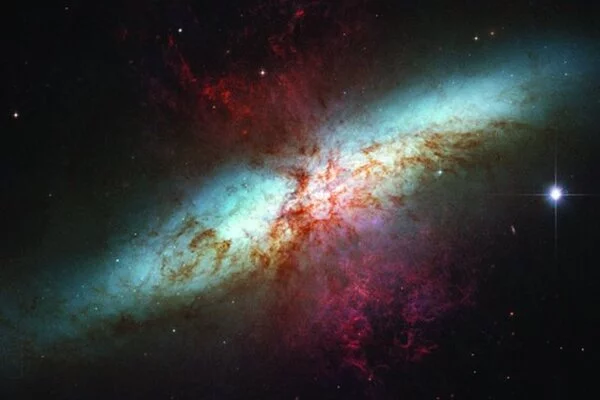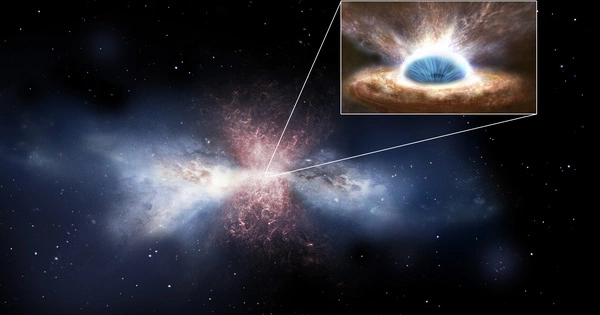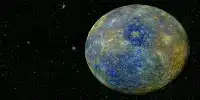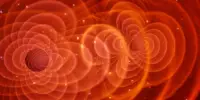A supermassive black hole’s powerful jets alter the conditions for star formation in interstellar clouds. A European team of astronomers led by Professor Kalliopi Dasyra of the National and Kapodistrian University of Athens, Greece, and including Dr. Thomas Bisbas of the University of Cologne, modelled several emission lines in Atacama Large Millimeter Array (ALMA) and Very Large Telescope (VLT) observations to measure gas pressure in jet-impacted clouds and ambient clouds.
They discovered that jets significantly change the internal and external pressure of molecular clouds in their path using these unprecedented measurements, which were recently published in Nature Astronomy. In the same galaxy, depending on which of the two pressures changes the most, both cloud compression and star formation can occur, as can cloud dissipation and star formation delay.
“Our results show that supermassive black holes, despite being located at the centers of galaxies, can affect star formation on a galaxy-wide scale,” said Professor Dasyra, adding that “studying the impact of pressure changes on the stability of clouds was critical to the success of this project.” Once a few stars form in a wind, it is usually very difficult to detect their signal above the signal of all other stars in the galaxy hosting the wind.”
Most galaxies in our Universe are thought to have supermassive black holes at their centers. When particles falling into these black holes are trapped by magnetic fields, they can be ejected outwards and travel far inside galaxies in the form of enormous and powerful jets of plasma. These jets are frequently perpendicular to galactic disks.
Our results show that supermassive black holes, despite being located at the centers of galaxies, can affect star formation on a galaxy-wide scale, studying the impact of pressure changes on the stability of clouds was critical to the success of this project. Once a few stars form in a wind, it is usually very difficult to detect their signal above the signal of all other stars in the galaxy hosting the wind.
Professor Dasyra
However, in IC 5063, a galaxy 156 million light years away, the jets are actually propagating within the disk, interacting with cold and dense molecular gas clouds. Compression of jet-impacted clouds is theorized to be possible as a result of this interaction, leading to gravitational instabilities and eventually star formation due to gas condensation.
For the experiment, the team used the emission of carbon monoxide (CO) and formyl cation (HCO+) provided by ALMA, and the emission of ionized sulfur and ionized nitrogen provided by VLT. They then used advanced and innovative astrochemical algorithms to pinpoint the environmental conditions in the outflow and in the surrounding medium.

These environmental conditions contain information about the strength of stars’ far-ultraviolet radiation, the rate at which relativistic charged particles ionize the gas, and the mechanical energy deposited on the gas by jets. Narrowing down these conditions revealed the densities and gas temperatures characteristic of different parts of this galaxy, which were then used to calculate pressures.
“We ran many thousands of astrochemical simulations to cover a wide range of possibilities in IC 5063,” said co-author Thomas Bisbas, a DFG Fellow at the University of Cologne and former postdoctoral researcher at the National Observatory of Athens. A difficult aspect of the work was meticulously identifying as many physical constraints as possible to the examined range that each parameter could have.
“This way, we could get the optimal combination of physical parameters of clouds at different locations of the galaxy,” said co-author Mr. Georgios Filippos Paraschos, Ph.D. student at the Max Planck Institute for Radio Astronomy in Bonn and former Master’s student at the National and Kapodistrian University of Athens.
In fact, pressures were measured in IC 5063 at a variety of locations. Rather, maps of this and other quantities in the galaxy’s core were created. These maps enabled the authors to see how the gas properties change as a result of the jet passage. The team is now looking forward to the next big step in this project: using the James Webb Space Telescope to conduct additional research into the pressure in the outer cloud layers, as measured by the warm H2. “We are very excited to receive the JWST data,” Professor Dasyra said, “because it will allow us to study the jet-cloud interaction at an exquisite resolution.”















